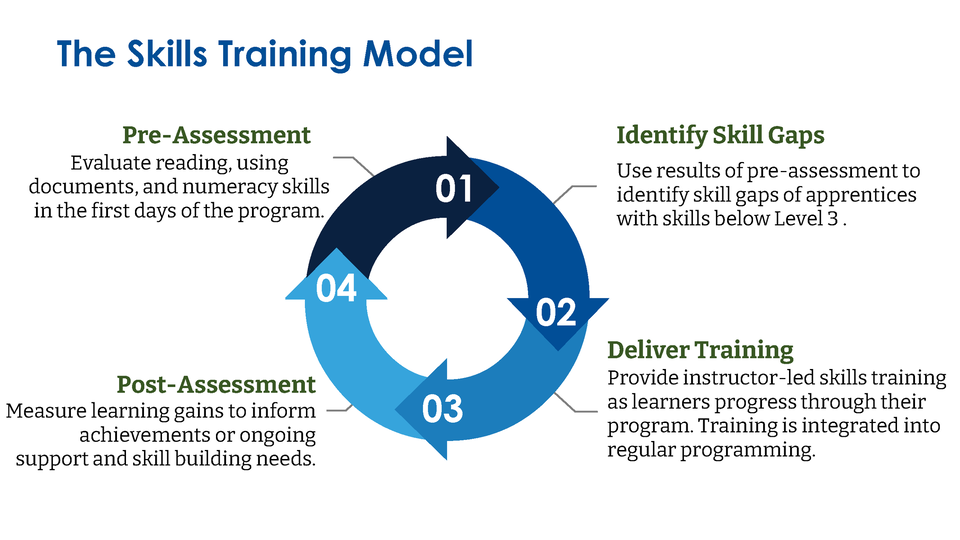About the project

Background
The pathway to becoming a certified journeyperson can be challenging. Research shows that apprentices need strong skills that are the foundation to learning all other skills (i.e., essential skills/ Skills for Success) to cope with the demands of learning a new trade and the skill requirements of work following certification. Evidence suggests that targeted, instructor-led reading, using documents and numeracy skills training makes a difference.
Bow Valley College and the Northern Alberta Institute of Technology, through a multi-year collaboration, have demonstrated that embedding this type of skills training into apprenticeship programs can substantially improve apprenticeship outcomes and success.
The Success in Apprenticeship project built on these promising results by piloting this approach with apprentices and pre-apprentices. Using authentic trades-focused materials, instructors offered apprentices and pre-apprentices training opportunities to enhance their reading, using documents and numeracy skills during technical training.

The Skills Training Model identified apprentices and pre-apprentices with potential skills gaps early in their technical training program. Early identification of skills and training participation was deemed critical to supporting success beyond the first years of technical training.
Those with skills below the recommended level were offered opportunities to participate in reading, using documents and numeracy skills-focused training led by their technical training instructor. This just-in-time approach to building skills gave apprentices the tools they needed to acquire technical knowledge efficiently and supported their future success.
Outcomes and objectives
Beyond demonstrating the value of embedding a formalized Skills Training Model within technical training, the project also:
-
increased capacity of technical training instructors to incorporate authentic reading, using documents and numeracy skills training into core programing;
-
identified the successes and limitations of multiple training delivery models (e.g.; stand-alone, integrated, online);
-
evaluated the return on training investment to encourage further integration of reading, using documents and numeracy skills development opportunities into apprenticeship training programs